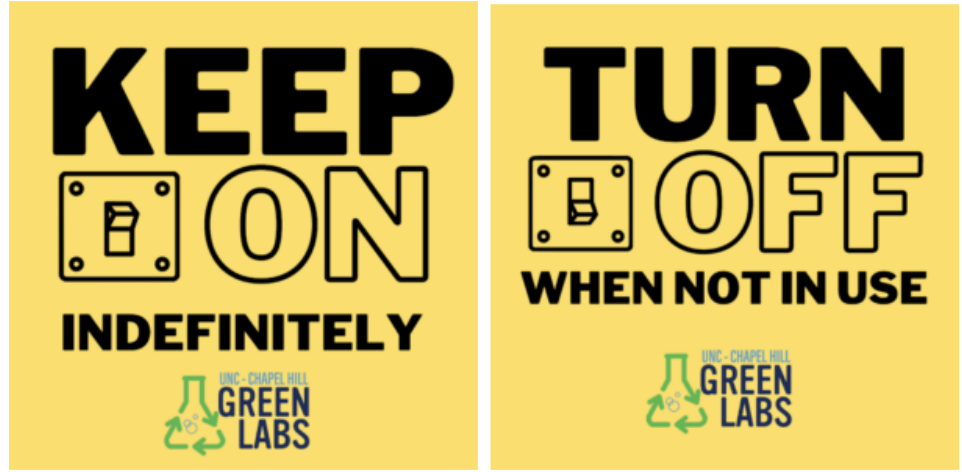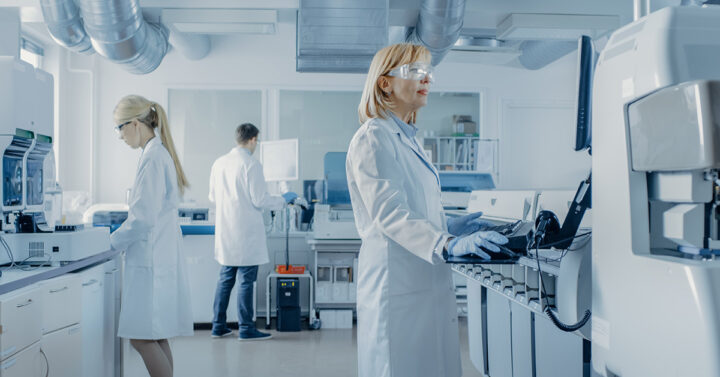Why Biotech Labs are Going Green

Labs naturally produce a lot of waste. For research purposes, materials need to be sterilized and can be costly to clean, and labs require more energy and utilities than traditional businesses — particularly in the biotech space.
At the same time, the costs to operate a biotech lab are increasing year over year, sometimes exceeding $100,000 per day. With supply chain disruptions, inflation, and a surge of demand for biotech research, biotechs are turning to more sustainable practices and reconfiguring their lab operations to reduce environmental impact and costs.
Here’s a look into how companies are building sustainable labs in life sciences, biotech, and R&D and developing supply chain resilience as a result.
The Rise of Laboratory Sustainability
Across all industries, environmental, social, and governance (ESG) initiatives are becoming more prominent as the climate crisis worsens and resources become more limited. Organizations who focus on ESG goals and sustainability are predicted to see more investments and better performance in 2022 and beyond.
In the lab, organizations like My Green Lab are working to “build a global culture of sustainability in science” by providing education and resources, and spreading awareness of sustainable lab practices in life sciences.
Research labs generate three to ten times more energy and water than traditional offices, and generate millions of tons of plastic waste each year, and labs that make an effort to be more sustainable can cut their energy use and costs by up to 40%, which has led to a recent push for more sustainability in the lab.
The “smart” and “green” labs of the future are more energy-efficient, automated, and conscious of waste and utility use, and make funding go farther by saving costs.
How can labs be more sustainable?
To start, labs should run an efficiency audit to identify areas of wasted supplies, manual work, energy use, and significant staff time. Then, lab managers should work closely with finance teams and bench scientists to automate workflows, incorporate technology, and increase efficiency — without forgetting to integrate tracking and data-collection into every step to keep an eye on sustainability metrics in the future.
To become more sustainable, lab managers or operators should:
- Build efficient workflows using automation
- Train staff on lab efficiency practices
- Minimize energy consumption
- Reduce waste and reuse or recycle lab supplies
- Effectively store and manage inventory
- Eliminate rogue spending
- Simplify vendor management
3 Ways to Create a Sustainable Biotech Lab
As lab managers develop plans to make their labs more sustainable and reduce environmental impact, they can take small steps with big impact. For example, if you run an inventory audit and find hundreds of dollars worth of expired inventory, you can start by improving lab supply ordering, tracking, and management. When supplies are used and re-ordered efficiently, your lab saves money and reduces waste, all while helping experiments reach milestones more quickly.
Here’s what sustainable lab operations look like in biotech, R&D, and life sciences research.
1. Optimize lab spend.
Running a lean lab means that you aren’t spending unnecessary funding on things you don’t need, and that you are reducing overall waste (in time, supplies, and energy). Review lab spend on a monthly or quarterly basis to uncover areas that use the most budget. You may learn that expedited shipping fees, which put pressure on the already strained supply chain, are eating up significant costs. By developing a plan to pre-order bulk supplies, you’ll save time and money, all while reducing global energy consumption.
2. Develop supply chain resilience.
Supply chain resilience is the idea that labs have a strategic plan for supply ordering and management that is less impacted by fluctuating product availability and supply chain disruptions. To mitigate backordered products, take these steps to be proactive and strategic when ordering lab supplies.
Supply Chain Resilience Strategies:
- Plan research far in advance and use flexible experiment planning to minimize downtime.
- Order products in bulk if you have the storage.
- Maintain meticulous inventory management systems to ensure that all products are accounted for.
- Use multiple suppliers.
- Talk to scientific experts about alternate products or replacement products when materials aren’t available.
- Work with transparent suppliers who have accurate product availability and shipping details in their digital catalog.
3. Reduce biotech lab waste.
To reduce lab waste, you first need an understanding of what is waste, and what can be reused. Refer to My Green Lab’s guidelines on what lab materials can be reused and recycled, and explore take-back programs for certain lab items like styrofoam packaging.
Biotech Laboratory Sustainability Best Practices
Sustainability is more than just using recycled materials and turning off unnecessary lights at night. It’s a culture of being green in all aspects of lab operations, and it starts from when the company is founded.
Here are the biotech sustainability best practices labs should adopt to be more green.
Track all supplies from purchasing and shipping to ongoing inventory management.
Lab inventory and ordering management is critical to reducing waste. With efficient, digital processes, supplies are more likely to be used in a timely manner and experiments can run without fear of shipping delays. When all lab processes are streamlined, labs are more sustainable and use less waste.
Reuse, recycle, and return supplies, and train staff on sustainability.
Part of the Green Lab Program at UNC is training teams on being more environmentally conscious, so simple things like posters on equipment that notes whether it can be turned off when not in use or not can significantly reduce energy use.

Source: UNC
Use energy-efficient lab equipment and high-quality supplies.
IoT (Internet of Things) connected devices like smart HVAC systems, lighting systems, and refrigerators and freezers can save labs thousands of dollars on utility bills, while making their labs more green.
Develop a culture of sustainability in the lab.
The Argonne National Lab’s Energy and Water Reinvestment Program earned them a 2021 U.S Department of Energy Sustainability Award — they completed 24 energy and water savings initiatives that saved over $180K in annual costs. Small measures add up, and when everyone in the lab, from finance to operations to bench staff, is invested, it makes an impact.
Looking to make your lab operations more efficient and sustainable? Explore our guide to going green in the lab.


